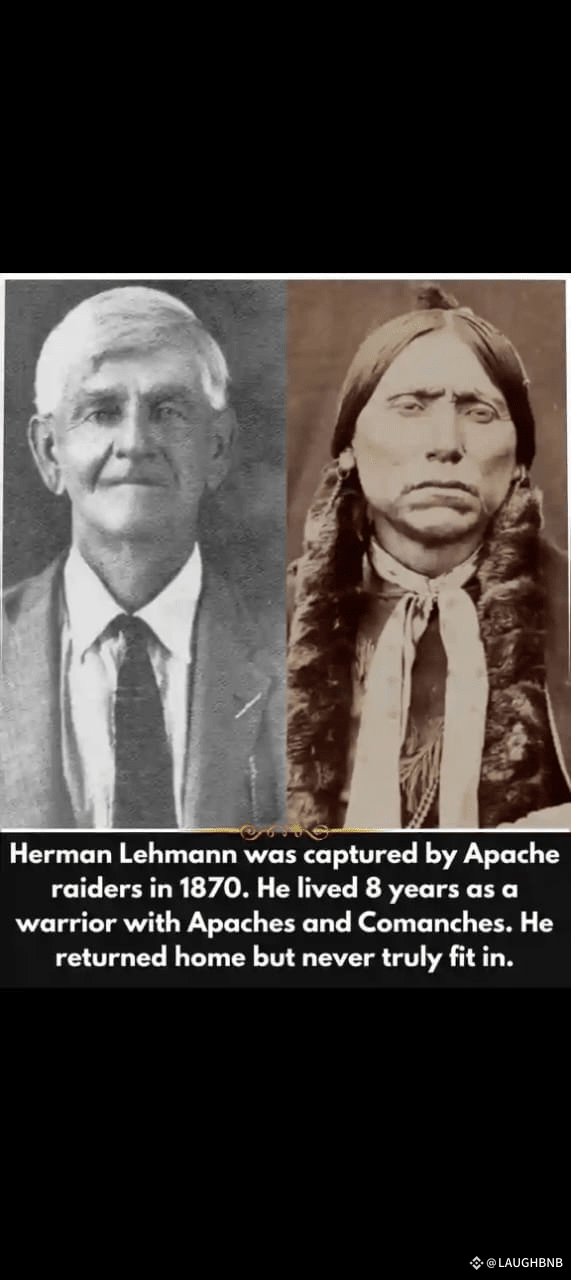
Imagine being taken from your family… and returning years later as a warrior for another people.
In 1870, 11-year-old Herman Lehmann was working near his home in Loyal Valley, Texas, when Apache raiders attacked.
His younger brother escaped after nine days in captivity. Herman did not.
He was adopted by Apache chief Carnoviste, given new clothes, a new name, and a new life.
They taught him to ride bareback, hunt with a bow, and fight with a rifle.
Soon, he was raiding settlements and battling Texas Rangers, Comanches, and Mexicans — no longer as a captive, but as one of them.
Years later, the Apaches were scattered, and Herman was taken in by the Comanches under Quanah Parker, their most famous chief.
He lived as a Comanche warrior, speaking their language, wearing feathers, and joining in their hunts and battles.
Eight years had passed since he’d last seen his family.
In 1878, U.S. troops forced his return to white society.
But the boy who had left in overalls came back in buckskin, carrying a rifle, and speaking only Apache and Comanche.
His German parents barely recognized him — and he barely recognized the life he once knew.
For years, Herman struggled to fit in.
He hunted local livestock for food, mistrusted settlers, and resisted “civilized” ways.
Only slowly did he relearn English, adapt to farming, and start telling his story.
By the end of his life, Herman Lehmann had lived in two worlds — and never fully belonged to either.
Would you call him a survivor… or someone stolen by history?